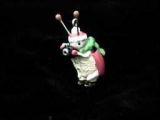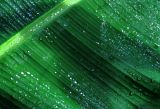- Forum
- General Discussion | Introductions | Off Topic Forum
- Photography General Discussion
- I just discovered RAW mode!
I just discovered RAW mode!
Post #53254
-

- shutter bug
- New Kid On The Block
-
- Nikon D3000
- Followers: 0
- Posts: 30
-
Points:
0
-

- Baydream
- Moderator
-
- Canoni/60D/70D/5DmkIII
- Followers: 388
- Posts: 11185
-
Points:
7280
Post #53272
shutter bug wrote: Raw is like a negative
Shoot, learn and share. It will make you a better photographer.
fineartamerica.com/profiles/john-g-schickler.html?tab=artwork
-

- photobod
- Paparazzi
-
- Nikon D800 + D300
- Followers: 563
- Posts: 8907
-
Points:
150
Post #53283
www.dcimages.org.uk
"A good photograph is one that communicate a fact, touches the heart, leaves the viewer a changed person for having seen it. It is, in a word, effective." - Irving Penn
-

- Henry Peach
- Apprentice
-
- I currently use a 5DII or Sony Nex-3 most of the time.
- Followers: 50
- Posts: 2925
-
Points:
16
Post #53304
If your camera is set to raw it saves the raw file without processing it.
The raw file is like exposed, but undeveloped film. It still needs to be processed. With the software that came with your camera you can probably process the raw file just like the camera would if you want. The software may ofter many more additional processing options and control than what's available in the camera.
The big advantage to the raw file is that you can process all you want, and if you don't like what you end up with you can just start over. All changes you make are recorded in a recipe side file. The raw file is not altered. This means that instead of deciding before the exposure whether the photo needs +1 or +2 contrast, you can just look at the photo as you adjust contrast, and set it to whatever looks best to your eye.
There are a lot of things you can do in processing. Start with the fundamentals like color, contrast, and sharpening. Look for a tutorial on the basics of using the processing software you have. You can also just fiddle. As long as you don't lose the original raw file you can always set it back the way it came out of the camera.
After you have it looking the way you want you'll save a copy of it as a jpeg or tiff for printing or the web.
-

- ilh2009ky
- Lone Wolf
-
- Canon T4i and XSi
- Followers: 51
- Posts: 138
-
Points:
768
Post #53513
Second, Adobe's Photoshop and, to my knowledge, all image editing programs work based on color. Hence, you need to make sure your monitor/printer present colors correctly. To do this, you need to color calibrate your monitor. There are several software packages available for this. I use one called the "Spyder" by ColorPlus. It has a small device that hangs over the LCD (or CRT) screen and, once the software is opened, it takes about 10 minutes to calibrate the colors. I usually calibrate my monitors about every two or three months.
One last note about RAW. It's the ultimate in control. If you shoot JPEG, you are depending upon the camera manfacturers' engineers in-camera software to determine contrast, saturation, etc. With RAW, you make all of these decisions. The downside of RAW is that you'll spend more time on your computer (your digital darkroom). I have several friends with studios and who also shoot in nightclubs. They are making lots of money. They all shoot JPEG and would never consider using RAW (especially since they print and sell the nightclub photos pretty much on the spot). You can't do this with RAW since it requires quite a bit of computer processing. Me, on the other hand, I shoot RAW 98% of the time and I wouldn't do it any other way. I like the total control. I'm also not making much money with my landscape photos. I'm happy but broke!.
-

- KCook
- Photo Elder
-
- Canon EOS 50D and Olympus E-P5
- Followers: 1325
- Posts: 5410
-
Points:
32913
Post #53661
2 - My Canon certainly does apply in-camera settings to RAW images, I use these all the time. Of course I could choose to just leave the RAW images at the defaults, but I don't. Maybe Nikons are different about this?
Kelly Cook
-

- Henry Peach
- Apprentice
-
- I currently use a 5DII or Sony Nex-3 most of the time.
- Followers: 50
- Posts: 2925
-
Points:
16
Post #53723
KCook wrote: My Canon certainly does apply in-camera settings to RAW images, I use these all the time. Of course I could choose to just leave the RAW images at the defaults, but I don't. Maybe Nikons are different about this?
You are correct. In camera processing settings are recorded in the side file and used to create the jpeg that is displayed on the LCD, but they are not permanent processing changes, no raw data is discarded, and they can be reversed. Depending on the raw processing software being used, and how it's set, it may or may not apply the in-camera processing settings to the viewed image when the raw file is opened.
I often set my in-camera processing to BW so I can see the photos in BW on the LCD. When I open the files in Adobe Camera Raw I can switch them back to color to use the grayscale processing in ACR which offers me more options and control than the in-camera BW.
It's important to consider in-camera processing settings when shooting raw, because how the photo looks on the LCD and the in-camera histogram (and thus the blinky warnings) will be influenced by them. For instance if I raise the saturation and contrast in the camera, and I'm shooting flowers I will get highlight warnings on the LCD, yet when I open the raw file it's fine with no over-exposed highlights. So except for the occasional use of BW, I usually leave my cameras set to neutral or faithful picture style. These show me a histogram that is more accurate to the histogram I'm going to see in ACR.
-

- Henry Peach
- Apprentice
-
- I currently use a 5DII or Sony Nex-3 most of the time.
- Followers: 50
- Posts: 2925
-
Points:
16
Post #53724
ilh2009ky wrote: ...you need to color calibrate your monitor.
If you shoot JPEG, you are depending upon the camera manfacturers' engineers in-camera software to determine contrast, saturation, etc. With RAW, you make all of these decisions. The downside of RAW is that you'll spend more time on your computer (your digital darkroom).
A good calibration kit doesn't seem as exciting as a new lens or flash, but it's almost my favorite piece of equipment. It is wonderful to process my photos knowing what I see on the monitor is very much like my prints are going to turn out.
I think in the future we will have the option to install our own choice of processing software in our cameras. I may shoot jpeg occasionally if I could upload my favorite ACR/LR presets.
Post #53744
Matt if I ever get the chance to buy you lunch you must allow it. An hour of chatting with you would be worth the price of both meals.
I assume you have a Micky D's nearby?
“Amateurs worry about equipment, professionals worry about money, masters worry about light, I just make pictures… ” ~ Vernon Trent
-

- KCook
- Photo Elder
-
- Canon EOS 50D and Olympus E-P5
- Followers: 1325
- Posts: 5410
-
Points:
32913
Post #53887
Most of my shooting is outdoors in daylight. I've learned not to trust the LCD review under this lighting. When I do have big concerns about exposure I just bracket.
Kelly
Post #53892
Baydream wrote:
shutter bug wrote: Raw is like a negative
RAW ignores all those mode settings and lets you decide what adjustments to make.
You know, I know this, but I love shooting on jpeg. Don't know why. Maybe someday I'll venture out into raw.
-

- KCook
- Photo Elder
-
- Canon EOS 50D and Olympus E-P5
- Followers: 1325
- Posts: 5410
-
Points:
32913
Post #53906
Kelly
-

- Stealthy Ninja
- Moderator
-
- Fuji X stuff and a 1DsIII for some reason
- Followers: 982
- Posts: 16300
-
Points:
6837
Post #54827
jpeg = bad
It's pretty simple.
RAW = unprocessed picture
jpeg = processed picture
-

- KCook
- Photo Elder
-
- Canon EOS 50D and Olympus E-P5
- Followers: 1325
- Posts: 5410
-
Points:
32913
Post #54968
Kelly
- Forum
- General Discussion | Introductions | Off Topic Forum
- Photography General Discussion
- I just discovered RAW mode!
Latest Reviews
The Fujifilm XT5 is a 40MP mirrorless camera capable of 6.2K video at 30p. With those specs, it’s an ideal choice for photographers needing a camera to pull double duty for imaging and video.
The Canon EOS R100 is an entry-level mirrorless camera introduced in 2023. But just because it’s an entry-level camera doesn’t mean it’s a bare-bones camera. Find out why in this review!
Nikon’s retro-looking Nikon Zfc is anything but retro. Under its classic body is a host of features and amenities that make it a worthwhile compact mirrorless camera for 2024.
The Canon EOS R50 is one of the newest R-system cameras from Canon. Is it worth your money? Find out all the details you need to know in this comprehensive review.
Forum Top Posters
-
1TCav 9 posts
-
2CharleyL 6 posts
-
3Sawyer 5 posts
-
4Tristan R 3 posts
-
5AstralArti... 3 posts
-
6Hassner 3 posts
-
7Randy Shaw 3 posts
-
8Moe 3 posts
-
9Jason Stevens 3 posts
-
10db3348 3 posts
Latest Articles
Urban photography is a genre showcasing features in urban settings. You can photograph people, architecture, mass transit, and many other subjects. Learn how to do so in this guide!
The Nikon D850 might be an older DSLR, but it was ahead of its time when it debuted in 2017. That means it still has plenty of firepower to compete with today’s powerful mirrorless cameras.
The best beginner camera isn’t the same for everyone. That means having choice is of the utmost importance. In this guide, explore five excellent beginner camera options for 2024 and beyond.
Child portrait photography is a unique undertaking requiring special skills and talents to get the best results. Start mastering this photography niche with these essential tips!
The Fujifilm XT5 is a 40MP mirrorless camera capable of 6.2K video at 30p. With those specs, it’s an ideal choice for photographers needing a camera to pull double duty for imaging and video.
Using leading lines in photography helps improve the composition by drawing viewers in and leading their eye from the foreground to the background. Explore some fine examples of this in this guide!
The Insta360 has one of the best lineups of action cams and 360-degree cameras. With these Insta360 accessories, you can elevate your photography and videography game!
Creating impactful photos of landscapes depends on many factors, not the least of which is your talent behind the lens. This guide explores other elements required for the best product.


















